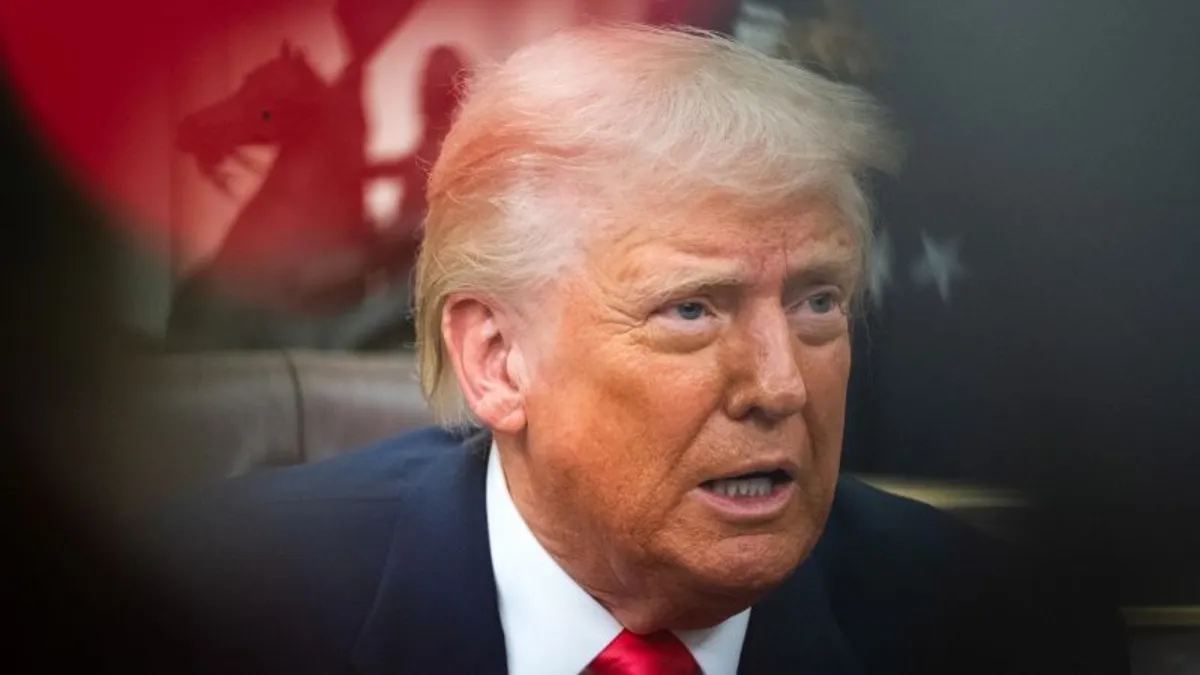
In a significant move to enhance national security, US military officials are currently in a race to develop the “Golden Dome” defense system. This initiative aims to safeguard the United States against long-range missile strikes. Multiple sources reveal that the White House has communicated that no financial limits will be imposed to actualize one of President Donald Trump’s top priorities for the Pentagon.
The “Golden Dome” initiative represents the Trump administration's effort to rebrand existing plans for a missile defense system similar to Israel’s renowned Iron Dome. As the Pentagon faces pressure to cut budgets, military officials have been instructed to ensure that future funding for the “Golden Dome” is incorporated into budget estimates from 2026 to 2030. However, the specifics of the system remain largely undefined, with sources indicating that the project is still in its conceptual stages.
One insider noted, “Right now, Golden Dome is really an idea.” While there may be relevant technology in consideration, discussions remain largely theoretical. The challenge lies in accurately forecasting future costs, which are expected to run into billions of dollars for construction and maintenance.
Trump has consistently advocated for a missile defense program akin to Israel’s Iron Dome. However, experts emphasize that the two systems are vastly different. The Iron Dome is designed to defend populated areas from short-range threats in a geographically small nation, while Trump's vision encompasses a comprehensive solution capable of protecting the entire United States from advanced ballistic and hypersonic missiles.
“Israel is tiny,” a source highlighted. “It is entirely feasible to blanket Israel in radars and a mix of mobile and fixed interceptors.” In contrast, the vast expanse of the United States complicates the feasibility of a similar approach, given that intercontinental ballistic missiles (ICBMs) can re-enter the atmosphere far from coastal borders.
During his first week in office, President Trump issued an executive order mandating Defense Secretary Pete Hegseth to propose a plan for a next-generation missile defense shield by March 28. Recently, a senior Pentagon official confirmed that efforts are actively underway. “In alignment with protecting the homeland and per President Trump’s executive order, we’re collaborating with the industrial base to navigate supply chain challenges linked to the Golden Dome,” stated Steven J. Morani, currently acting as undersecretary of defense for acquisition and sustainment.
Simultaneously, Pentagon officials are realigning the Defense Department’s budget proposal for 2026 to prioritize the Golden Dome initiative. According to a memo obtained by CNN, this represents a significant shift in the military’s strategic goals, emphasizing the necessity to bolster the missile defense of the US homeland.
As discussions about the Golden Dome progress, US arms manufacturers are geared up for potential financial gains. The Missile Defense Agency recently held an Industry Day to solicit proposals from companies interested in the project. They received over 360 abstracts detailing various strategies for planning and executing the Golden Dome.
Lockheed Martin has taken proactive steps by launching a dedicated website for the Golden Dome, asserting that the world’s largest defense contractor possesses the “proven, mission-tested capabilities” to bring this initiative to fruition.
Historically, the ambition to establish a space-based missile defense system is not new. In the 1980s, President Ronald Reagan initiated the Strategic Defense Initiative, aiming to counter ballistic nuclear missiles, which was ultimately canceled due to immense technical and economic challenges. Laura Grego, a Senior Research Director at the Union for Concerned Scientists, notes that the difficulties inherent in defending against a sophisticated nuclear arsenal remain, emphasizing that such an endeavor is both technically and economically unfeasible.
Currently, America’s ballistic missile defense is engineered to counter a limited number of missiles from rogue states like North Korea or Iran. The existing system, relying on the Ground-based Midcourse Defense (GMD), has faced scrutiny due to its failure in nearly half of its tests, raising concerns about its capability to thwart a large-scale attack from nations like Russia or China.
Trump's vision of a more advanced missile defense requires complex systems, including satellites for communication, missile detection, and interception, which are long-term projects. Retired Rear Adm. Mark Montgomery projects that creating a ballistic missile defense system might take 7-10 years, but warns of severe limitations, suggesting it may only adequately protect critical federal buildings and major cities.
As the US invests resources into developing the Golden Dome, experts caution that adversaries could respond by expanding their own arsenals of ballistic missiles, potentially destabilizing the current balance of nuclear deterrence. The implications of a successful Golden Dome could undermine the effectiveness of the US second-strike capability, raising questions about strategic stability.
The "Golden Dome" defense system presents a complex array of challenges, both technical and strategic. As discussions and developments continue, the feasibility of creating an effective and economically viable defense system remains a topic of significant debate among experts and officials alike.